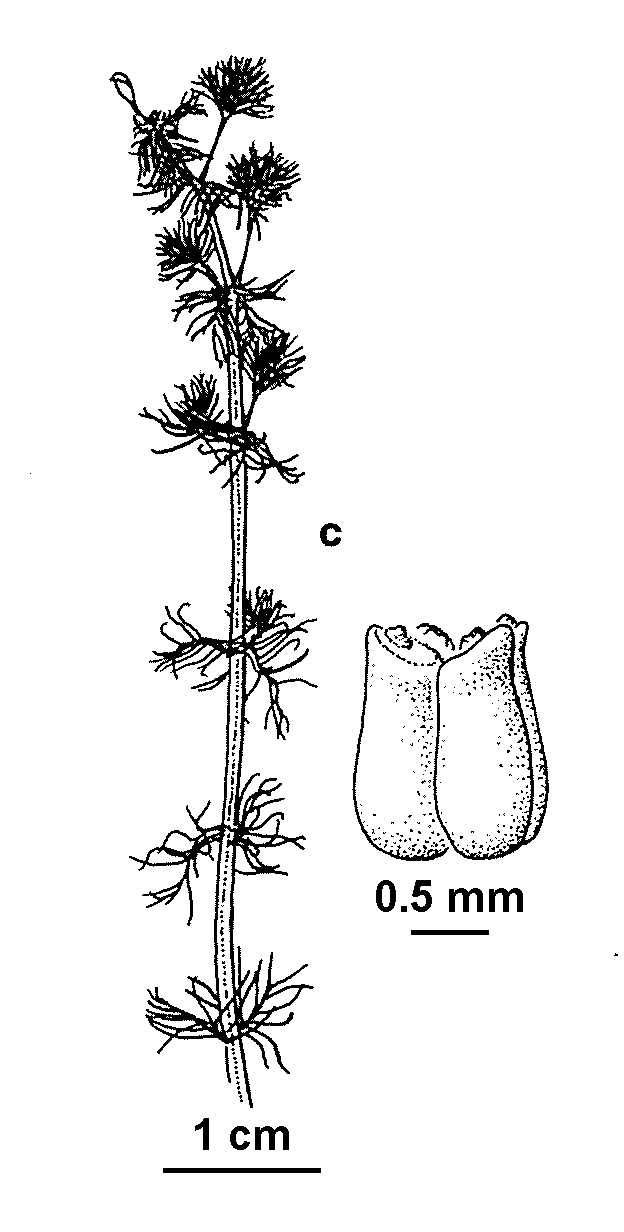Myriophyllum muelleri
Sond. Hooded Water-milfoilSlender perennial aquatic herb; stems to 60 cm long, c. 1 mm diam., rooting mainly at the base, emergent parts branched. Leaves mostly decussate, lowermost rarely in whorls of 3, uppermost sometimes alternate, orbicular, mostly 5–11 mm long, pectinate, with 12–16 pinnae. Bracteoles of male flowers ovate to orbicular, c. 1.3 mm long, apiculate, white; bracteoles of female flowers similar, c. 0.4 mm long; flowers solitary. Male flowers terminal, usually single, on a slender peduncle to 20 mm long and on a receptacle 0.4–1 mm long, enclosed in a hooded bract; sepals 4, vestigial; petals 4, 2.1–2.2 mm long, red, deciduous; stamens 8. Female flowers sessile, naked, 2–4 per branch of inflorescence, situated below male flower; sepals and petals absent; ovary 4-celled, styles teardrop-shaped, creamy-yellow, stigmas smooth. Fruit cylindric, silvery-grey to reddish; mericarps cylindric, 1.7–1.8 mm long, truncate, smooth. Flowers Sep.–Feb.
Wim, GleP, Brid, VVP, VRiv, GipP, OtP, WaP, Gold, DunT, HNF. Also WA, SA, Tas. Scattered across southern Victoria west from French Is., where found growing in lakes and swamps in both fresh and brackish water.
A distinctive species readily recognized by its decussate pectinate leaves, large fruit and pedicellate male flowers subtended by a hooded bract. The hooded bracts are unique in the genus (Orchard 1985).
Jeanes, J.A. (1996). Haloragaceae. In: Walsh, N.G.; Entwisle, T.J., Flora of Victoria Vol. 3, Dicotyledons Winteraceae to Myrtaceae, pp. 887–908. Inkata Press, Melbourne.
 Spinning
SpinningOrchard, A.E. (1985). Myriophyllum (Haloragaceae) in Australasia. II. The Australian Species. Brunonia 8: 173–291.



